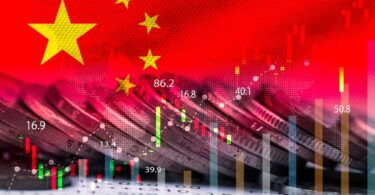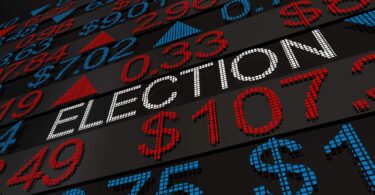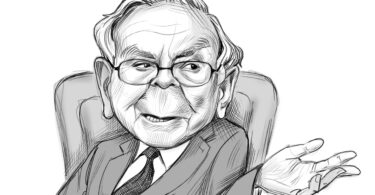These passive income powerhouses can make long-term investors millionaires.
It's been a challenging year on Wall Street. Ever since the 126-year-old Dow Jones Industrial Average, widely followed S&P 500, and growth stock-powered Nasdaq Composite hit their respective record-closing highs, they've tumbled as much as 19%, 24%, and 34%. The latter two declines put the S&P 500 and Nasdaq in the grip of a bear market for the first time since March 2020.
Although bear markets have a tendency to feed on investors' fears, downtrends in the market tend to be relatively short-lived. What's more, every big decline in the major U.S. indexes throughout history has served as a stellar buying opportunity for patient investors.
In other words, it's not a matter of if you should buy stocks right now; it's all about what stocks you should be buying.
Dividend Aristocrats can deliver steady gains for patient investors
Perhaps the best suggestion is dividend stocks. Companies that regularly pay a dividend are typically profitable on a recurring basis and have navigated their way through economic downturns before. They're just the type of steady businesses we'd expect would grow in value over time.
Additionally, income stocks have a way of outperforming their non-paying counterparts over long periods. In 2013, J.P. Morgan Asset Management issued a report comparing the performance of publicly traded companies that initiated and grew their dividend over a period of 40 years (1972-2012) to stocks that didn't pay a dividend. Over this four-decade stretch, the income stocks averaged an annual return of 9.5% for their shareholders. The companies that didn't offer a payout slogged their way to a meager 1.6% annualized return.
But not all dividend stocks are equal. Among the vast sea of public companies that return a portion of their earnings to investors is a special group known as “Dividend Aristocrats.” A Dividend Aristocrat is an S&P 500 company that's increased its base annual payout for at least 25 consecutive years. There are a little over five dozen Dividend Aristocrats.
Among this small group of passive-income powerhouses are three Dividend Aristocrats with the potential to make long-term investors a lot richer. If you give these three income giants until 2032, they have the innovation and intangibles capable of turning a $300,000 investment into $1 million.
NextEra Energy: 2.17% yield
The first high-caliber Dividend Aristocrat that can generate a 233% return by 2032 is the U.S.'s largest electric utility stock by market cap, NextEra Energy (NEE). NextEra has increased its base annual payout in each of the past 26 years.
The great aspect of utility stocks is that they offer highly predictable operating cash flow. Demand for electricity doesn't change much from one year to the next. That allows a company like NextEra to outlay capital for new infrastructure projects, acquisitions, and dividends without compromising its profitability.
What really sets NextEra Energy apart from its peers is its renewable energy strategy. No electric utility is generating more capacity from wind or solar power. With the company pledging to spend up to $55 billion, in aggregate, between 2020 and 2022 on new infrastructure projects, it's unlikely any other utility will surpass NextEra on the green energy front anytime soon.
In one respect, clean-energy projects are costly. But this cost has proved well worth it. Aside from using historically low lending rates to its advantage when financing projects, NextEra has enjoyed a substantial decline in electricity generation costs due to its aggressive green energy investments. This has resulted in a high-single-digit compound annual growth rate in an industry where companies typically grow by a low single-digit percentage.
NextEra Energy is also buoyed by its regulated utility operations (those not powered by a renewable energy source). Having state public utility commissions oversee rate levels ensures that NextEra won't be exposed to potentially volatile wholesale electricity pricing.
Walgreens Boots Alliance: 4.72% yield
A second Dividend Aristocrat that can turn $300,000 into a cool $1 million in 10 years is pharmacy chain Walgreens Boots Alliance (WBA). Walgreens has paid consecutive quarterly dividends for more than 89 years and increased its base annual payout for the past 46.
Pardon the pun, but healthcare stocks are usually immune to stock market hiccups and economic downturns. No matter how badly the U.S. economy and/or stock market perform, people will always get sick and require prescription medicines, medical devices, and healthcare services. But COVID-19 brought a unique scenario to the table for traditionally foot traffic-driven U.S. pharmacy chains, which led to a tangible reduction in profit. This short-term weakness represents an ideal buying opportunity for long-term investors.
Even before the pandemic took hold, Walgreens Boots Alliance's management team put a multipoint strategy into motion that's designed to lift the organic growth rate, boost operating margins, and drive repeat visits.
Walgreens eliminated more than $2 billion in annual operating expenses a full year ahead of schedule. But it's spent aggressively on various digitization initiatives. For example, emphasizing direct-to-consumer sales is a no-brainer way for Walgreens to increase its organic growth rate and improve shopping convenience.
However, the most exciting development is its partnership with, and investment in, VillageMD. The two companies have already opened more than 100 co-located, full-service clinics, with the goal of reaching 1,000 clinics by the end of 2027. Whereas most pharmacies can only administer vaccines, these physician-staffed clinics are perfect for bringing in repeat patients and funneling them to Walgreens' pharmacy.
Chevron: 3.84% yield
The third Dividend Aristocrat with the potential to turn $300,000 into $1 million by 2032 is integrated oil and gas giant Chevron (CVX). In January, Chevron increased its base annual payout for a 35th consecutive year.
Chevron is benefiting from crude oil and natural gas hitting multidecade highs. Elevated prices for energy commodities are liable to stick around given that new infrastructure investments were reduced during the pandemic. Russia's invasion of Ukraine has further comprised the global energy supply chain. Drilling is where Chevron can bring in its juiciest profits.
But it's important to understand that Chevron's long-term success is also a function of its integrated operating model. In addition to drilling and exploration, Chevron owns pipelines, refineries, and chemical plants that effectively act as a hedge if oil and natural gas prices fall. When energy commodity prices fall, the input cost for refineries and chemical plants declines, while consumer and business demand for petroleum products often increases.
Despite contending with a historic demand drawdown in 2020, Chevron is in considerably better financial shape than most oil stocks. Its debt-to-equity ratio of 20% is below most major oil companies, and it's been able to keep key projects on track. For instance, Chevron's offshore developments in the Gulf of Mexico, and off the coast of Guyana and Suriname, should be key production contributors by mid-decade.
Chevron's management team hasn't been shy about repurchasing its own stock to reward its shareholders. Chevron expects to buy back up to $10 billion worth of its common stock before the year's end. With fewer shares outstanding, the company may appear even more attractive on a fundamental basis.
Originally published on Fool.com
Sean Williams has positions in NextEra Energy and Walgreens Boots Alliance. The Motley Fool has positions in and recommends NextEra Energy. The Motley Fool has a disclosure policy.





